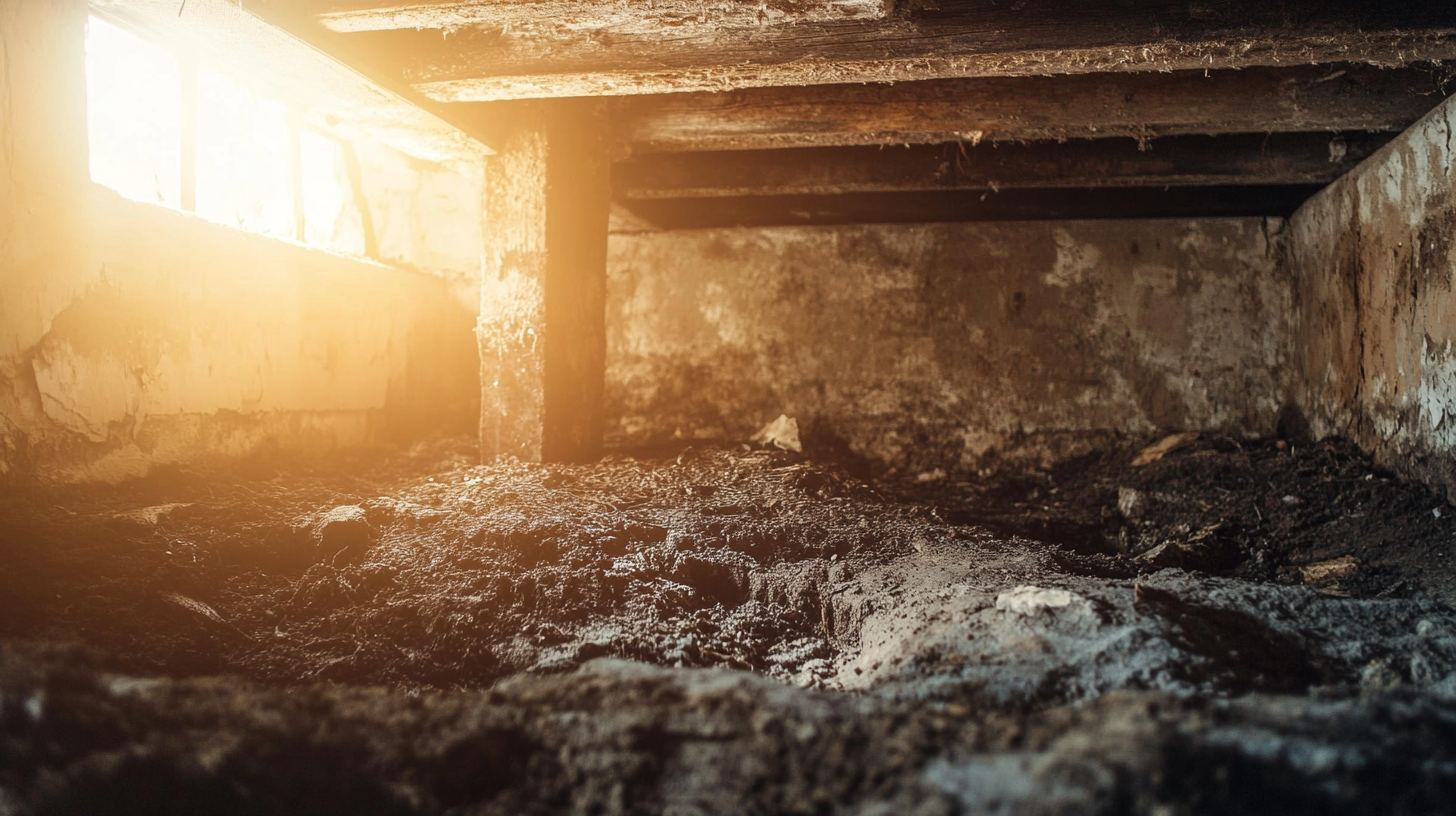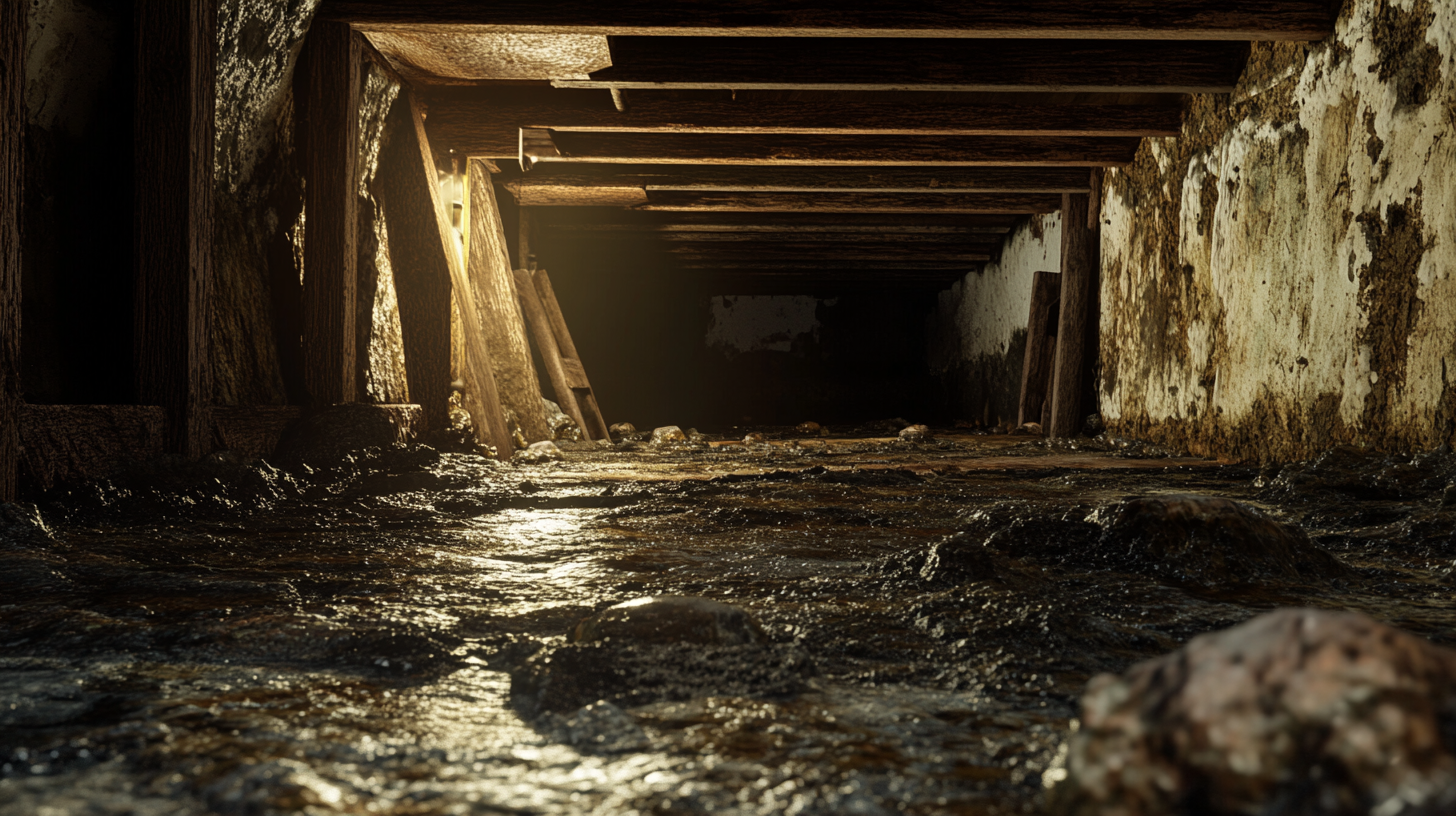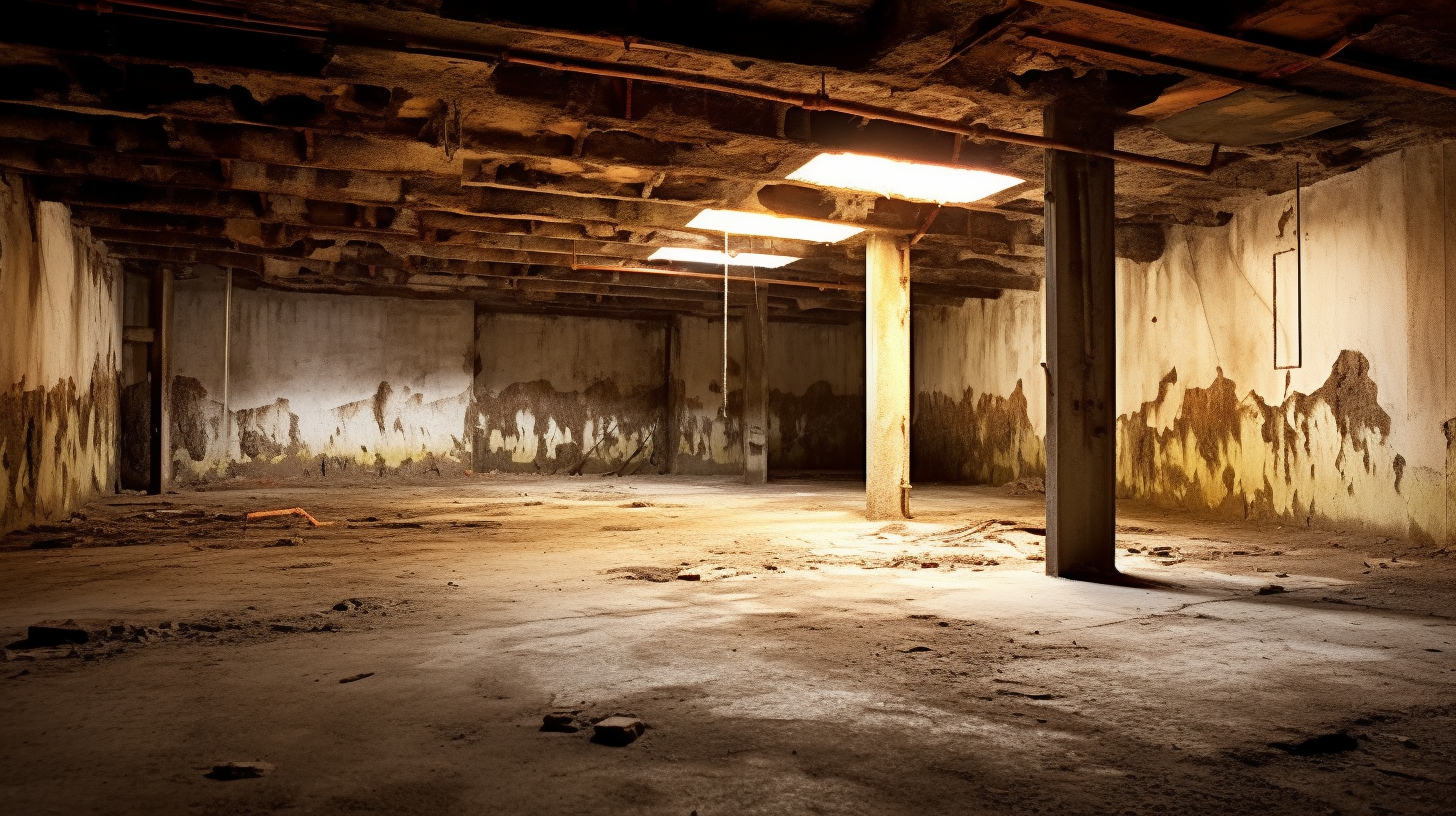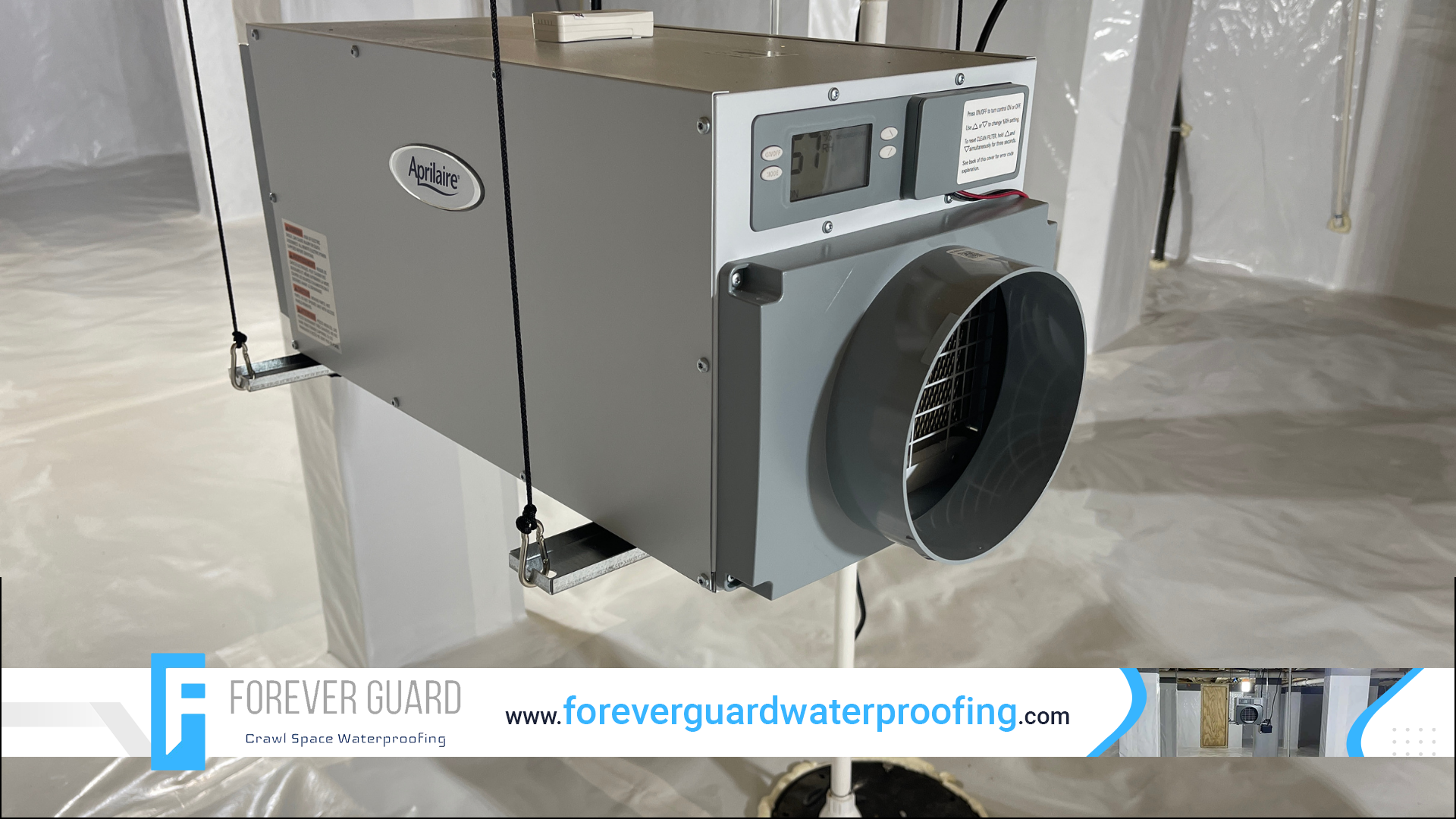Now IS THe Time To...

Crawl Space Services In Knoxville, TN
Stetson Howard: 865-432-6743
CRAWL SPACE ENCAPSULATION, REPAIR, WATERPROOFING & MOLD REMOVAL
No-Obligation, Free Inspections
No-Obligation Free Estimates
We Warranty All of Our Work
100% Satisfaction Guaranteed
Are you living in Knoxville, TN, and struggling with excessive crawl space moisture? If so, you have come to the right place! Our comprehensive guide will teach you how to effectively control crawl space moisture in your home. We'll provide tips on installing sump pumps, dehumidifiers, and other products to effectively combat moisture buildup.
We'll also explain proper ventilation techniques that help keep your crawl space dry. With this guide, you will have the knowledge and tools needed to protect your home from uncomfortable humidity levels and potential mold growth. Read on to find out more about controlling crawl space moisture in Knoxville, TN!
2 Common Causes of Crawl Space Moisture
Crawl space moisture can be caused by two common causes:
- Excessive moisture. The most common cause is an overabundance of moisture in the air. Poor ventilation and water leaks can also contribute to crawl space moisture problems.
- Improper sealing of doors & windows. Improperly sealed windows and doors can let in humidity from outside, while plumbing or weather-related issues can cause water to leak into your crawlspace. Without proper attention, these conditions can lead to mold growth, wood rot, and structural damage to your home if left unchecked.
To keep control of your crawl space humidity levels, it’s important to identify the underlying causes of the problem and address them accordingly.
Crawl Space Moisture Control Solutions
Professional crawl space moisture control solutions often involve a combination of:
- Installation
- Repairs
- Maintenance.
To tackle the root cause of the problem, specialized equipment like sump pumps and dehumidifiers may be installed to help reduce humidity levels.
Other upgrades to crawl space moisture control can include:
- Insulation
- Waterproofing membranes
- Vapor retarders block out moisture from entering your home.
Homeowners should practice proper ventilation by opening windows or using fans in areas where excess moisture is likely to accumulate. With regular maintenance and repairs as needed, these methods can effectively reduce humidity levels and keep your crawlspace free from excessive moisture buildup.
Crawl Space Moisture Control Maintenance
Professional crawl space moisture control is an essential step in keeping a home safe and secure. To reduce humidity levels, homeowners can install sump pumps and dehumidifiers, as well as waterproofing membranes or vapor retarders. In addition, proper ventilation practices such as opening windows or using fans can help keep these areas dry. Regular maintenance and repair services should also be utilized to ensure that these solutions remain effective over time.
Maintenance and repair services are needed to keep the moisture control systems running properly. Inspections should be performed regularly to check for any potential sources of water intrusion, such as leaky pipes or cracks in the slab foundation. Maintenance may also include replacing insulation or waterproofing membranes if they become worn or damaged. Maintaining the moisture control system helps protect your home from the damaging effects of high humidity levels within your crawl space.
Crawl Space Moisture Control Costs
Effective crawl space moisture control requires a comprehensive approach. Installing sump pumps and dehumidifiers is the most common way of addressing high humidity levels within your home's crawl space, with additional measures such as waterproofing membranes or vapor retarders employed when necessary. In some cases, thermal insulation will also be needed to reduce heat transfer between the living area and the crawl space. With effective maintenance and repair services, these systems can last for several years.
The cost of maintaining a crawl space moisture control system depends on factors such as the size of the area being treated, the type of equipment being used, and any required repairs or replacements that may arise over time. A professional assessment should be conducted to determine the best course of action for keeping your home’s crawl space dry and safe.
Get Professional Crawl Space Moisture Control
Professional crawl space moisture control is a necessary part of safeguarding the integrity of any home. When crawl spaces have high levels of humidity, water can seep in, compromising the structural integrity of the foundation as well as leading to mold and mildew growth. To prevent these risks, homeowners should invest in professional solutions for controlling moisture levels and keeping their homes dry.
These solutions typically include the installation of sump pumps and dehumidifiers, which help reduce humidity levels in your crawl space and ensure that your home is free from water damage. Waterproofing membranes or vapor retarders are important for preventing excess moisture from entering your home and creating high humidity levels. Proper ventilation practices such as opening windows or using fans can also help keep these areas dry. Regular maintenance and repair services should be utilized to ensure that these solutions remain effective over time.
Facts About Crawl Space Moisture Control
- Crawl space moisture control is an important part of home maintenance in Knoxville, TN due to the area's humid climate.
- The most common cause of crawl space moisture is water vapor that enters through the walls and floor of the crawl space.
- Mold and mildew growth can occur in a damp crawl space, leading to health issues and structural damage.
- Crawl space moisture control can be achieved by installing a vapor barrier, sealing any cracks or openings, and installing a dehumidifier.
- The vapor barrier should be made of a thick, durable material such as 6-mil polyethylene and should be installed on the walls and floor of the crawl space.
- Cracks and openings should be sealed using a high-quality sealant such as silicone caulk.
- A dehumidifier should be installed to reduce the humidity levels in the crawl space and keep them at a safe level.
Frequently Asked Questions about Crawl Space Moisture Control
What are the most common causes of crawl space moisture?
Moisture in crawl spaces is often caused by excessively humid outdoor air entering the crawl space through weak or damaged seals around vents and doors, or from areas such as bathrooms, laundry rooms, and kitchens that produce high levels of humidity.
Groundwater can seep into the area through cracks in basement walls or leaky pipes and ductwork. Poor ventilation practices are also a major contributing factor to excess moisture. Improper insulation can result in heat transfer between the living area and crawlspace, resulting in condensation buildup. Clogged gutters and downspouts can cause water to pool near the foundation of your home.
How can I prevent moisture in my crawl space?
The best way to prevent moisture from entering your crawl space is to create a protective barrier. Start by thoroughly sealing all vents, doors, and penetrations with foam, tape, and caulking. Ensure that the seals are secure and in good condition.
Next, install an effective dehumidification system such as a sump pump and/or dehumidifier to keep humidity levels low. Use vapor retarders or waterproofing membranes on the floor of the crawlspace to block moisture from seeping into your home's structure. Make sure proper ventilation practices are followed throughout the house to reduce excessive indoor humidity levels.
What should I do if I find mold in my crawl space?
If you find mold in your crawl space, you must take action quickly. Start by cleaning up any standing water or moisture and ventilate the area with fans. You should then inspect and clean any affected materials or surfaces to prevent further growth.
It is also a good idea to hire a professional to test the air quality of the space and determine what type of mold is present. Depending on the severity of the issue, you may need to remove and replace any porous materials that have been contaminated with mold. If necessary, use a fungicide or other antimicrobial product to kill the remaining mold spores in order to eradicate the problem.
What can I do to reduce crawl space moisture?
To reduce crawl space moisture, you should start by sealing any vents, doors, or penetrations. You can also install a dehumidification system such as a sump pump or dehumidifier to keep the humidity levels low. You can use vapor retarders or waterproofing membranes on the floor of your crawlspace to block moisture from entering the home's structure. Make sure to practice proper ventilation techniques inside the house to reduce indoor humidity.
How can I tell if my crawl space is too moist?
You can tell if your crawl space is too moist by looking for signs of water or moisture damage on the inside walls and floor. You can use a hygrometer to measure the humidity levels in your crawl space, as levels above 50-60% are indicative of an unhealthy environment. You should also be sure to inspect any insulation material for signs of mold growth and mildew, as these are indications that your crawl space is too moist.
What are the signs of crawl space moisture?
Signs of crawl space moisture include musty odors, condensation on the walls and floor, standing water, peeling paint, mold or mildew growth, and warped flooring. You may also notice increased humidity levels inside your home due to rising dampness from the crawl space. If any of these signs are present, it is important to take steps to reduce the moisture levels in your crawl space as soon as possible.
Recent Blog Posts
Crawl Space News







